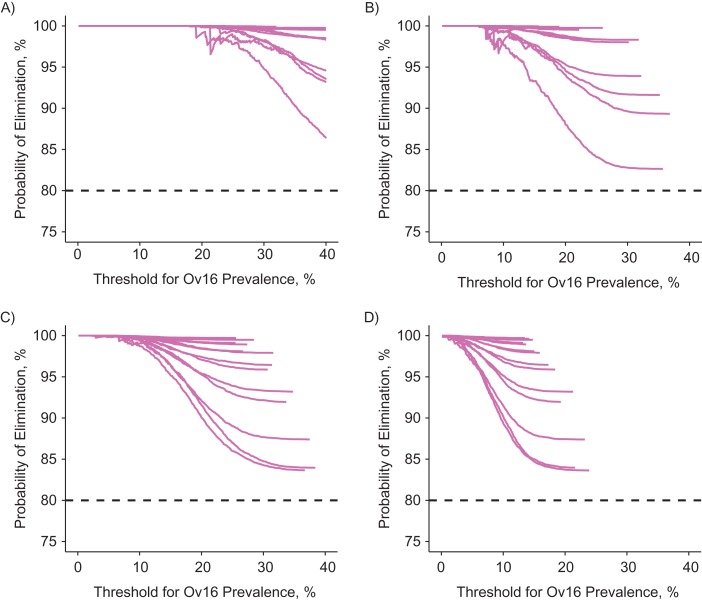Figure 4.
Positive predictive value of Ov16 seroprevalence in children aged 5–14 years for elimination with varying threshold values (horizontal axis). The 4 panels represent 4 combinations of precontrol community microfilarial load (CMFL) and assumptions about reversibility of seropositivity. Y-axes represent the probability of elimination if the Ov16 antibody prevalence is under the threshold as defined by the x-axis (i.e., the positive predictive value). Lines within each panel represent different histories of mass drug administration (number of rounds and coverage, with annual frequency), but only those that were predicted to result in a priori probability of elimination of at least 80% (i.e., before measuring Ov16 antibody prevalence (dashed line)). Web Figure 3 shows similar plots for all simulated scenarios, sampled age groups, and assumptions about seroreversion. A) Precontrol CMFL of 10 microfilariae (mf) per skin snip with seropositivity assumed to be lifelong. B) Precontrol CMFL as in A, but seropositivity is assumed to revert when the last female worms in a host dies. C) Precontrol CMFL of 55 mf per skin snip with seropositivity assumed to be lifelong. D) Precontrol CMFL as in C, but seropositivity is assumed to revert when the last female worms in a host dies.

